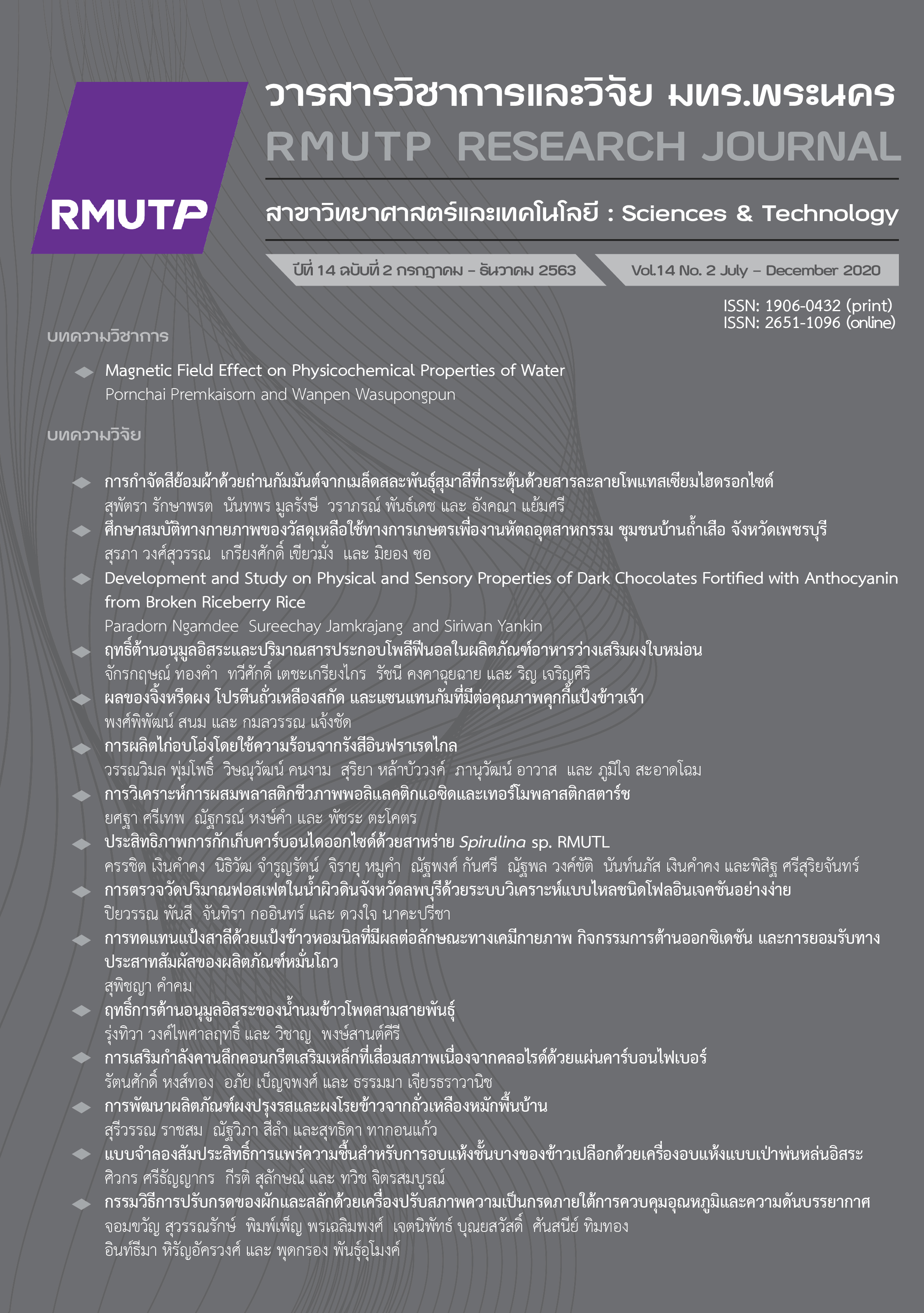Strengthening of Deteriorated Reinforced Concrete Deep Beam Caused by Chloride with Carbon Fiber Sheets
Main Article Content
Abstract
Deterioration of reinforced concrete deep beam structure caused by chloride is severe and takes up wide area even though the structure is not exposed to sea water or brackish water. Even the structure which is far from sea water or brackish water is affected by this problem. When the reinforced concreate deep beam structure is affected by chloride, steel reinforced inside the structure is corroded resulting in reducing the cross-sectional area of the reinforced steel affecting load capacity, deflection and beam failure. If there is no repair or strengthening, such capabilities are continuously reduced until it is no longer safe to use the beam. Therefore, it is necessary to repair or strengthening the deteriorated structure to be safely used. This research investigated strengthening of deteriorated reinforced concrete deep beam caused by chloride with 4 formats of carbon Fiber sheets to seek guidelines for the most efficient strengthening. The result showed that the strengthening by the 4 format of carbon fiber sheet could increase ultimate load capability yet could not improve ductility of the deteriorated beam to become close to the beam that is not deteriorated. The strengthening that could increase the maximum ultimate load capability was the table format strengthening. In addition, the strengthening that the carbon fiber making 45 degrees with the length of the beam could best prevent diagonal cracks.
Article Details
References
Building Code Requirements for Structural Concrete, ACI Standard and Report 318, 2014
D. Kumar Sahoo, M. Sagar Varma Sagi, B. Singh, and P. Bhargava, “Effect of Detailing of Web Reinforcement on the Behavior of Bottle-shaped Struts,” J. Adv. Concr. Technol., vol. 8, no. 3, pp. 303–314, Oct. 2010.
M. D. Brown and O. Bayrak, “Minimum transverse reinforcement for bottle shape struts,” ACI Structure Journal, vol. 103, no. 6, pp. 813-826, Nov. 2006.
C. Suffern, A. El-Sayed, and K. Soudki, “Shear strength of disturbed regions with corroded stirrups in reinforced concrete beams,” Can. J. Civ. Eng., vol. 37, no. 8, pp. 1045–1056, Aug. 2010.
S. Xu, Z. Zhang, R. Li, and B. Qiu, “Experimental Study on the Shear Behavior of RC Beams with Corroded Stirrups,” J. Adv. Concr. Technol., vol. 15, no. 4, pp. 178–189, Apr. 2017.
Ashhad Iman and Abul Kalam Azad, “Prediction of residual shear strength of corroded reinforced concrete beam,” International Journal of Advance Structure Engineering, vol. 8, no.3, pp. 307-318, Sep. 2016.
N. Thongkod and W. Yodsudjai, “Repairing structure deteriorated due to chloride with transfer electric ion,” Civil journal, vol. 17, no. 5, pp. 50-51, Sep.–Oct. 2005.
W. Yodsudjai, “Steel corrosion occurs in reinforced concrete,” Concrete journal, vol. 4, Aug. 2008.
R. Sahamitmongkol, “Deterioration of concrete structure due to contamination chloride in mixture,” Concrete journal, vol.6, Apr. 2009.
Standard Department of Public Works and Town & Country Planning, DPT Standard 1508, 2008.
A. H. Al-Saidy, A. S. Al-Harthy, K. S. Al-Jabri, M. Abdul-Halim, and N. M. Al-Shidi, “Structural performance of corroded RC beams repaired with CFRP sheets,” Compos. Struct., vol. 92, no. 8, pp. 1931–1938, Jul. 2010.
R. Azam and K. Soudki, “Structural performance of shear-critical RC deep beams with corroded longitudinal steel reinforcement,” Cem. Concr. Compos., vol. 34, no. 8, pp. 946–957, Sep. 2012.
Alexis M S and P. M. Philip, “Shear behavior of RC deep beams retrofitted with CFRP Sheets,” International Journal of Engineering Research & Technology (IJERT), vol. 6, no. 6, pp. 1-4, 2018.


